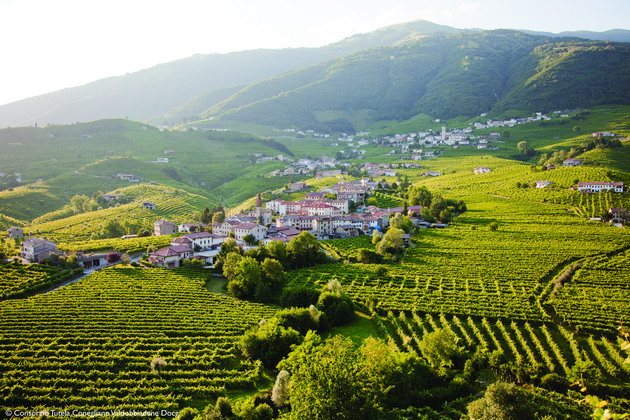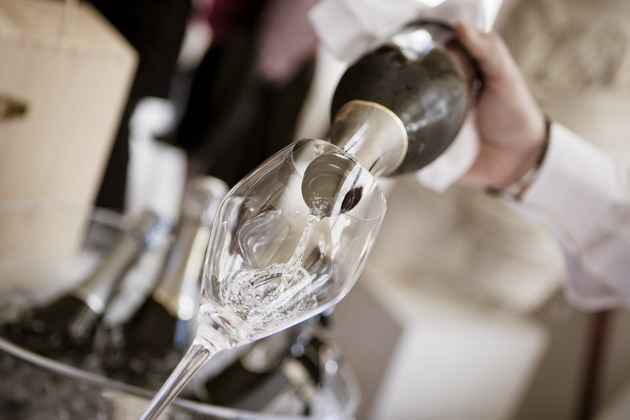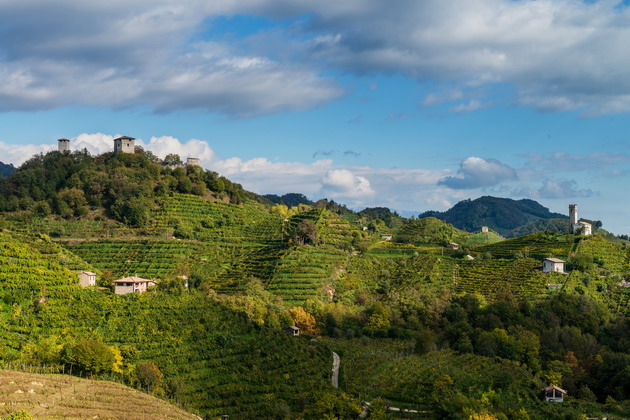Some say the national drink of Italy is espresso, others say it’s Prosecco.
Northeastern Italy’s distinctively aromatic sparkling wine is now beloved by the majority of the wine drinking world.
Often, it is misrepresented as an inexpensive alternative to traditional sparkling wines, which are laborious and costly to produce.
Could this be so?
Is it merely a cost-saving mix for mimosas? Definitely not, especially considering it is priced in a similar bracket to local sparkling or even Cava, Spain’s traditionally made sparkling wine.
There are plenty of other choices available to consumers, yet they overwhelmingly choose Prosecco.
Sales of Prosecco have soared in the last few years, though it has
gradually been gaining steam since the 1950s, when the technology to make it became more readily available. Producers have reported their sales growth reaching the limits of what they can provide.
It is a pretty common global trend for Prosecco wines to be the fastest growing sparkling wine category. This is especially true in both the U.K. and North America, two of the largest international wine markets. In the U.K., Champagne sales saw a meager 1% increase in sales, while Prosecco sales went up an incredible 34%.
As well as being affordable, the truth is Prosecco is gently sparkling, versatile, and aromatic too. It can be used as an aperitif, a cocktail ingredient, an easy pairing solution, or to celebrate.
Yes, traditionally produced sparkling wines (such as Champagne or Spanish Cava)  are delicious. However, for large crowds a wine with more primary character and less secondary flavour characteristics might be more suitable.
are delicious. However, for large crowds a wine with more primary character and less secondary flavour characteristics might be more suitable.
Primary, secondary, and tertiary flavour characteristics in a wine are an industry method of categorizing where certain flavours in wine come from. Tertiary characteristics come from age. Fresh fruit flavours become stewed/jammy and the structure and vitality in a wine become more delicate.
Secondary flavours come from production methods such as aging a wine with barrels or spent yeast cells (lees). Aging on lees is important for traditional sparkling wine. Over an extended period of time they support an “autolytic” character, which tastes bread dough or biscuit.
Prosecco’s charm comes from loads of primary taste characteristics. Flavours like fresh nectarine, pineapple, peach, pear, citrus, and florality (lilies or orange blossoms).
These are flavours from the actual grape that show in a youthful wine. Prosecco rarely ages more than several years and almost never sees less aging. This Prosecco, simply called The Independant Prosecco, is an exception to that rule of no lees contact.
To preserve those primary flavours of the grapes, Prosecco producers almost universally use the same method of production: the Charmat/ Martinotti/ tank method. After the juice is fermented into still wine, the wine undergoes the secondary step of fermentation (to provide carbonation) inside a pressurized tank. The temperature is kept extremely low, which ensures maximum aromatics and makes it easier to prevent autolytic secondary flavours.
It’s a cleaner sparkling wine purposely meant to be drunk young. The fresh fruit would have broad appeal among wine lovers and those new to wine, rather than a traditional sparkling.
It’s an ideal choice for bellinis or mimosas on Christmas morning, but it would also be great for poultry, ham, or appetizers. It’s subtle enough to not interfere with socializing, but has an undeniable charm.
Not all grape growers follow the rules about what is to be grown. This method of production can, and is, used on a myriad of other grapes.
The Prosecco maker, Carpene Malvoti, have both a typical range of Prosecco and a Sparkling Rose made from Pinot Nero (Pinot Noir) and a local grape called “Raboso.”
The agrarian area where Prosecco would eventually thrive did not have the financial luxury of other famous wine destinations. Many grape growers had to double crop by planting mulberry trees for fruit and silk, just to make their vineyards profitable.
Once it was clear that Prosecco had begun to be recognized for its quality, producers had to respond to this increased interest of their product with swift changes to protect the integrity of what they produce.
Concerned producers came together into an association now referred to as the “Prosecco Consortium.” The sole mandate of this organization, whose early origins dates back to the mid-twentieth century, was to advocate for the protected status of Prosecco wine.
They’ve managed to be instrumental in re-organizing the quality pyramid for the wine, as well as what qualifies as a Prosecco.
The Consortium for the DOC quality tier would become an official organization after the 2009 decision to grant a portion of Prosecco’s territory of origin to the highest tier of quality in the Italian wine appellation.
This was the centrepiece issue which had to be addressed by those who would eventually become the Consortium. It mostly revolved around the name of the main grapes involved in Prosecco production.
Originally, three of the main varietals used for Prosecco production were simply called Prosecco: Prosecco Tondo, Prosecco Longo, and Prosecco Nostrano.
This was worrisome because anybody in the entire world could grow these varietals and say they were ‘making Prosecco,’ even though the area for Prosecco is limited to specific areas recognized as having the terroir to grow quality Prosecco grape varietals.
Their solution was to change the name of Prosecco’s principle varietal from Prosecco Tondo to ‘Glera.’ This means if it is reproduced outside of the Prosecco delineated area it would be, at best, sparkling Glera and not officially Prosecco.
It is extremely rare, however, to find Glera grown outside its hinterland, along the Italian/Slovenian border. Though Charmat/Martinotti/tank method sparkling wines are commonly produced all over the world, they taste vastly different from those made from Glera.
Glera, itself, is a pale grape with naturally high levels of acid and aromatic compounds. Grown on the temperate slopes of the Treviso area of northeastern Italy, it retains a refreshing and delicate character in the wine it produces.
Most places that specialize in sparkling wine are cool climates; Carneros in California or Champagne in Northern France demonstrate this fact. Cool climates preserve acidity and aromatics, something Glera already happens to be good at.
These are the types of details wine regions must proactively defend in the wine market abroad. One may remember other regions, such as Chablis and Champagne, having similar difficulties protecting their domain of origin.
Examples of American wine from the early-to-mid 20th century would often have “American Chablis” or “American Champagne” on the label. Abuse of the labeling term became so widespread, Champagne is still often misused as a colloquial term for any sparkling wine.
The terroir that produces Prosecco is, as of 2009, now also protected by Italy’s appellation system. The two major distinctions being DOC (Denominazione di Origine Controllata) and DOCG (Denominazione di Origine Controllata e Garantita).
DOC Prosecco is less specific in origins and can be sourced from nine different territories: Venice, Vicenza, Padua, Belluno, Gorizia, Pordenone, Trieste, Udine, but Treviso is by far the most crucial area in volume of production.
The DOCG Conegliano Prosecco (con-AY-hlee-AH-no) Valdobbiadenne (valdo-BEE-AHH-dnay) should be considered the nougat centre of the Prosecco appellation.
Both place names often appear together on the label. Occasionally, if sourced from a more discriminating town between the two villages it can be appended ‘Rive’ (REE-vay).

The important thing to take from the specifics of production area is that it is Glera’s innate vitality and the cool climes together are what make it unique.
The cultivated aesthetic now extends beyond the wine, as well.
The Italian delegation to UNESCO have placed a claim to have Conegliano Valdobbiadenne declared a world culture heritage site.
For more information about the natural beauty of the area, the Prosecco Consortium have arranged a short film about the Conegliano Valdobbiadenne area that is guaranteed to make you want a glass of sparkling.
 Greg Hughes
Greg Hughes
Wine Writer & Sommelier
Greg is a wine scholar and writer. He has completed his WCO certificate, an honours in history, WSET 3, as well as the French Wine Scholar program. Greg began his wine career working with a large Canadian wine agency; selling wine, educating groups about wine, and organizing wine tastings.
His current interests include local history and wine (specifically Niagara), the Italian Wine Scholar Program, and is engaged in a graduate degree in legal studies focusing on regulating and selling alcohol in Ontario.
CAMPAIGN FINANCED ACCORDING TO (EC) REGULATION NO.1308/2013













